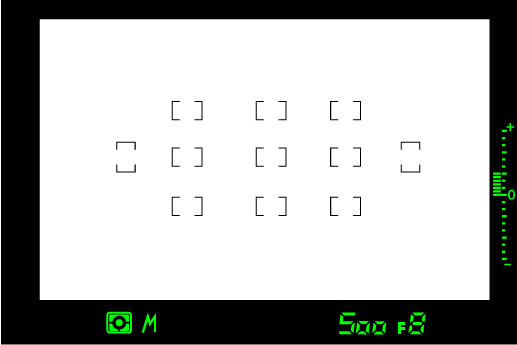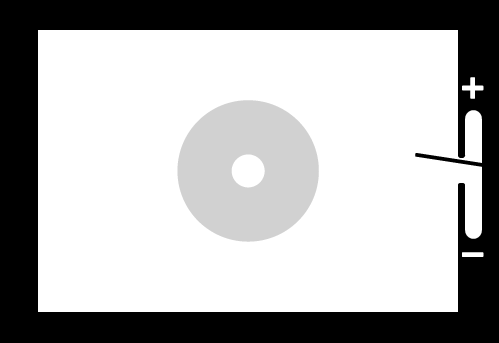The Reflective Meter
The reflective meter measures light reflected from the subject. It is pointed at the subject, and then activated to take a reading. Combined with the ASA setting (film speed), the meter will calculate a proper exposure setting.
Most 35mm SLR cameras have a built-in reflective light meter. These meters usually use a kind of amoeboid-shaped averaging pattern, then calculate an exposure based on that average. First, the ASA is set for the proper film speed, telling the meter what speed film you are using. You turn the camera on, and point it at the subject (also known as composing the image). Now, you take a meter reading. This usually involves pressing down on the shutter release a bit. How the camera displays what the meter reads differs widely. In the viewfinder, you may see a row of red, green, and yellow lights. There may be a number, with plus or minus sign(s). There may be a needle moving up and down, with some stationary circle or gap. The idea is to get things centered. READ YOUR MANUAL! You simply need to kow how to read your meter.
How the Meter Tells You
This is often the most confusing thing about meters, mostly because in-camera meters pretty much all read differently. Much like the layout of dashboard instrumentation in automobiles, the meter display of cameras, even the same model made at different times, changes. Some are as basic as a needle that is centered in a slot (by adjusting the aperture and/or shutter speed). Some use a series of lights: red being way off, yellow close, and green on. The newer bodies from both Nikon and Canon use a scale, in thirds of a stop, which lights up. There are all kinds of different ways, some very intuitive, and some that looked good on paper but don't work very well in the real world. Again, the best place to start is with the camera's manual.


Making the Adjustments
Since exposure is a combination of shutter speed and aperture, to adjust for a given reading you change one or both of these settings, depending on the image you want. Shutter speed controls the appearance of motion, and aperture controls depth of field. One will invariably be more important than the other. Just remember that you want the exposure value to be the same, so when you change one setting, you need to change the other: if you increase your shutter speed to a faster setting (less time), you need to open up the aperture, to let more light in. Likewise, if you close down the aperture (less light), you need to increase the time to a slower shutter speed.